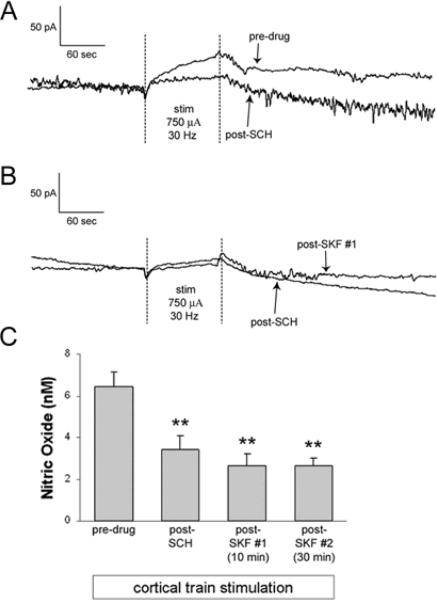Figure 4. Intrastriatal infusion of D1/5 antagonist attenuates NO efflux evoked via train stimulation of the frontal cortex and blocks the facilitatory effects of D1/5 agonism.
A) Recordings of NO efflux evoked prior to, and following, intrastriatal SCH infusion. Electrical stimuli were delivered as described above. B) Representative traces of NO efflux evoked approximately 90 mins following intrastriatal SCH (100 μM) infusion and 10–20 and 30–40 min following intrastriatal SKF infusion (5 μM for 10 min). Electrical stimuli were delivered as described above. C) The mean ± S.E.M. increase in NO efflux evoked by cortical train stimulation was significantly attenuated following SCH infusion as compared to pre-drug conditions (**p<0.001 as compared to pre-SKF group using one-way ANOVA with Bonferroni post-hoc test, n=5 rats). The mean ± S.E.M. increase in NO efflux evoked by cortical train stimulation applied during intrastriatal SKF infusion was significantly attenuated at both time points as compared to pre-drug conditions (**p<0.001 as compared to pre-SKF group using one-way ANOVA with Bonferroni post-hoc test, n=5 rats). No significant differences in measures of NO efflux were observed during SCH and SCH+SKF infusion periods.

